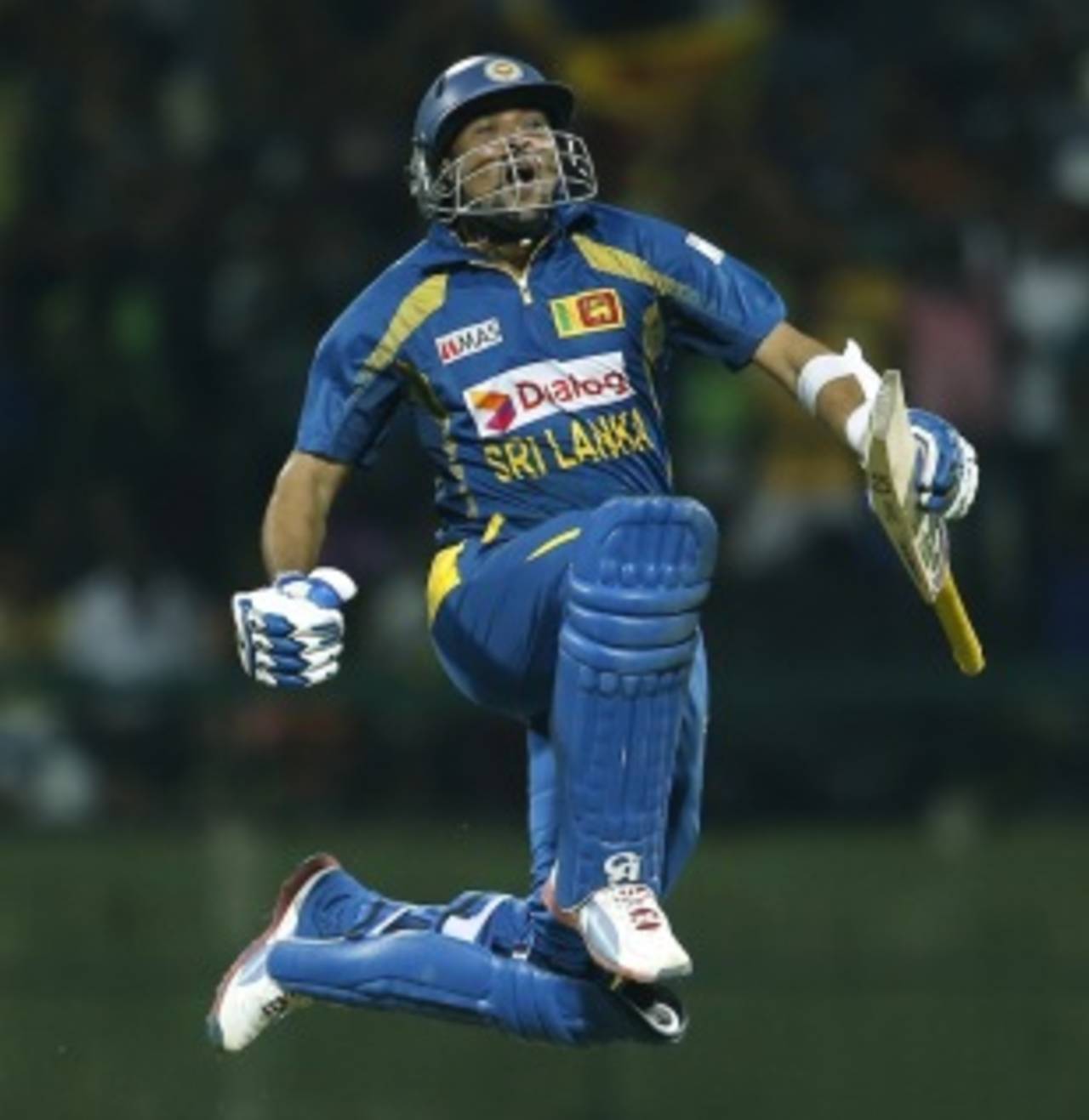Like every great entertainer, Tillakaratne Dilshan likes to adorn his grand performances with a moment the audience will not soon forget. Many times it is a fierce blow through the covers early in the innings - an act that is routinely his statement of unyielding intent, wrists and blade whipping manically toward ball that rarely deserves to be fetched from the fence. Other times it's his shot over the keeper, leaving the bowler wondering if he has a ball that might subdue a batsman who makes such cruel mockery of cricket's basic tenets.
Then on his best days, Dilshan plays a stroke that outstrips even the dilscoop for gall. Two years ago in a Twenty20 in Pallekele, he dropped to one knee and swept a low Shane Watson full-toss on off stump, flat and hard over the deep midwicket boundary.
Against South Africa in the fourth ODI, Dilshan's 17th hundred was notably short on thrills. His go-to shot through the covers was shelved entirely, balls were largely regarded on conventional merit and for much of their 184-run stand, Kumar Sangakkara outscored him blow-for-blow.
As Dilshan found his way back from a lean trot and from injury, he caged the abandon that founded his success and ground out a ton he knew he needed to make. It had been seven innings since he last crossed 50, and though he continues to make big breakthroughs with the ball, any team's oldest player can only go so long without a major contribution in his foremost suit. There is unbridled joy in each of Dilshan's hundred celebrations, but this one was tinged with some relief too. He is arriving at a period in his career where he must prove even to himself that his skill remains undimmed.
He had attempted a similar innings two matches ago, on a slower surface in
Colombo. His 43 from 64 then featured just one four; a glide to the third-man boundary. But having sat out the tri-series against West Indies through injury, perhaps body had not yet begun to fully cooperate with will. A wide delivery he would normally pummel through point took a top edge and finished in the wicketkeeper's gloves.
He has also had a major technical flaw re-exposed in this series. On Boxing Day last year, in a moment that epitomised Sri Lanka's ineptness in that match, Dilshan swiped across the line at a full, seaming Mitchell Johnson ball and had his stumps rattled. He spoke of having fixed the flaw when he hit two hundreds in three matches against Bangladesh in March, but departed in almost identical fashion in the Champions Trophy, when Mitchell McLenaghan bowled him in Cardiff. Against South Africa in the first ODI, Dilshan allowed Chris Morris' first straight ball following a spate of wides through his defences, as he aimed a shot through mid-on once again.
I'm not going to change how I play. If the ball is there to hit - even if it is the first ball - I'm going to hit it
Tillakaratne Dilshan
Both Lonwabo Tsotsobe and Morne Morkel honed in on Dilshan's stumps early in the innings, hoping he would oblige once more. But like with his cover drive, Dilshan remained untempted. The only expansive stroke he played off the seam bowlers in the arc from square leg to mid-off was a slog off a Tsotsobe free-hit. The straight balls were defused defensively instead, as he endeavoured to establish himself. It is an unusual ploy Dilshan said he may now use more often, if it brings him such success.
"Now with the new rule, run scoring has completely changed. If you take the last six or seven months, you can get a lot more runs in the last 15 overs than you can in the first 10. With the two new balls, it's better not to take a chance in those first 10 overs. There are also only four fielders on the boundary later on, when the ball is older and not doing much. When the rules change, we have to adjust as well."
He could not bring himself to admit he had embraced reticence though. Despite advocating a more thoughtful approach than he is used to, Dilshan remains a creature of instinct and an ardent opportunist. Once the game was secure in Pallekele, he strummed his steady piece into a crescendo, hitting nine late fours to plunder 44 from 21 deliveries. His first 50 runs had come in 83 balls.
"Still, given all that, I'm not going to change how I play. If the ball is there to hit - even if it is the first ball - I'm going to hit it."
By his own admission Dilshan does not train hard, even in a poor patch, and his method is perhaps no great exemplar for the young men finding their feet in the side. But there was no doubting his thirst for victory in Pallekele, as he strayed from the familiar to regain the confidence his cricket is founded on, and that is worth trading a few memorable shots for.
Andrew Fidel Fernando is ESPNcricinfo's Sri Lanka correspondent. He tweets here
